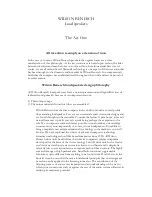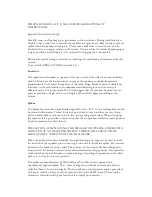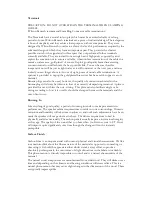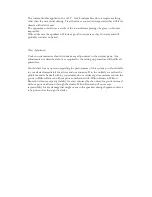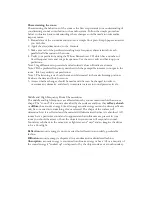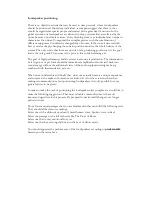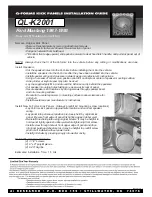
The subject of room acoustics
Acoustics is a complex subject and this guide should be treated for what it is, a simple
but, for some, informative guide. For a more in depth understanding you would need to
refer to a whole range of texts on the subject. The most important outcome of this
should be the greater appreciation of the role played by the room on the overall sound of
the audio system.
The air contained within the room is the link between the output of the loudspeaker and
your ear. How air behaves is dependent upon the attributes or character of the room. It
follows that a better understanding of basic acoustics and what facets cause the most
influence in the room will assist in making decisions about the way in which the room
and subsequently the system can be improved.
Room types fall between two extremes. A room can be
“dead”
(full of highly energy
absorbent materials and complex diffusing structures)
on the one hand, or very “
lively”
( few
absorbent surfaces and a high proportion of very reflective hard non absorbent surfaces)
on the other.
As so often is the case, a balance of materials is commonly preferable to one extreme or
the other. The correct balance for the end user is the goal.
Room attributes which can be changed easily
The contents of the room impact upon the overall acoustic character of the room. As
you would expect hard surfaces like glass and concrete tend to reflect a broad band of
acoustic energy. Complimentary materials that are soft and thick in section such as heavy
natural fibre curtains will tend to absorb a broad band of frequencies.
Room attributes that require more consideration
The other important factor is room dimensions shape and substantial internal structures
within the room.
What are Standing waves?
Soundwaves reflecting between two parallel walls set up resonance modes when :-
One-half, or a whole multiple of one-half, the wavelength of the sound wave is
equal to the distance between the walls.
These resonance modes are referred to as
“standing waves”.
In loudspeakers with
parallel walls these waves will cause distortions. The standing waves in your room will
distort the reproduction of your system sympathetically boosting certain frequencies.
If a certain standing wave frequency is acoustically isolated from its modal neighbors, its
effect is more likely to be audible and problematic. This can compromise the accuracy of
any loudspeaker.
To analyse your room for standing waves we would recommend that you work upto
about 300 Hz. Beyond this point they become less relevant and difficult to perceive.
Any standing wave below 300 Hz is detectable and should they combine sympathetically
the result will be a lumping together and this is very undesirable. Evenly distributed
modes are the goal.
Summary of Contents for Act
Page 1: ......


